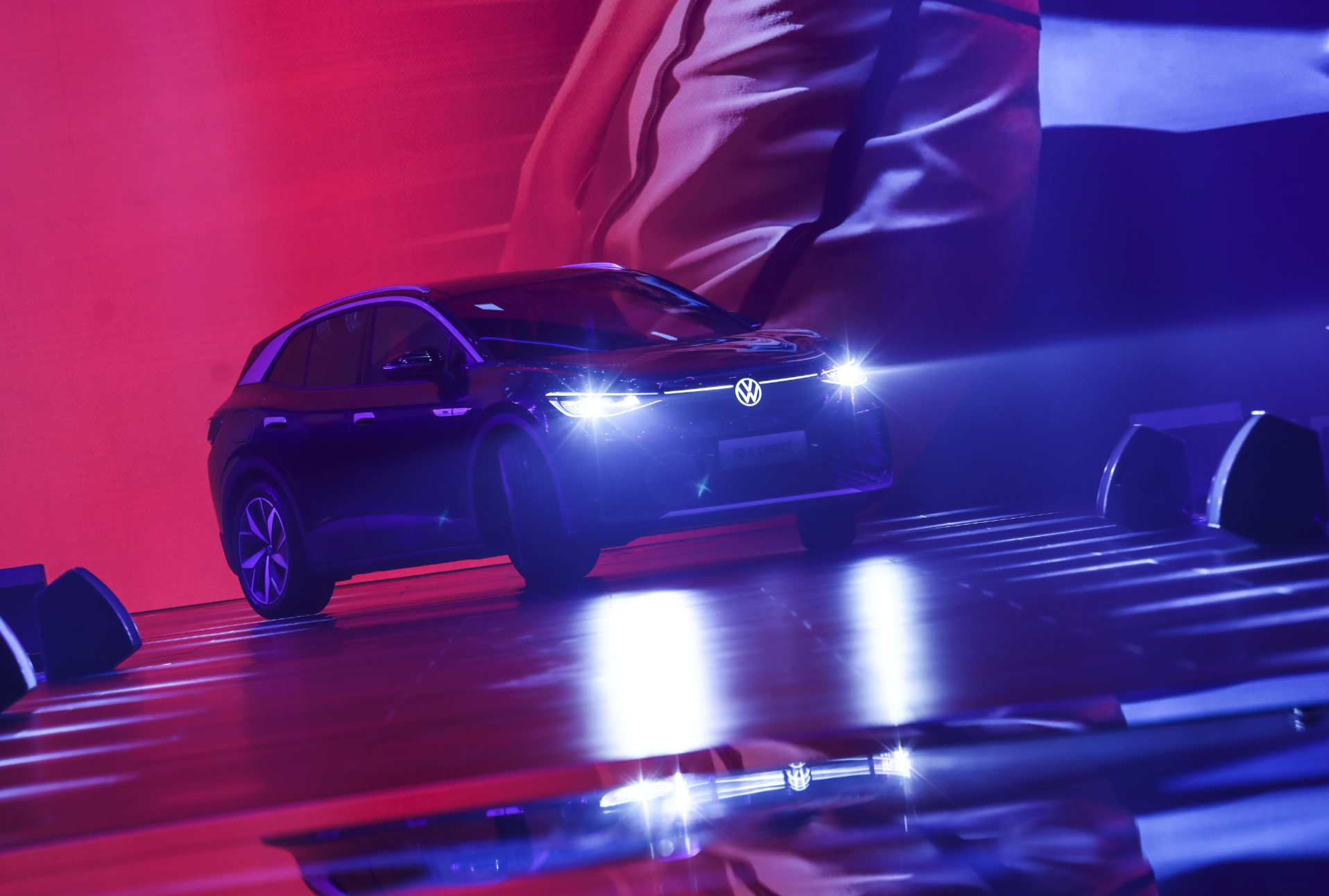On March 20, 2021, FAW-Volkswagen held a delivery ceremony for the ID.4 CROZZ SUV in Shenzhen, the first pure electric SUV from the MEB platform in the Chinese market. The ID.4 CROZZ has a total of 5 models with a price range of 1.999-2.799 million yuan, with battery packs in two versions, 55 and 84.8 kWh, and corresponding NEDC ranges of 400 km, 500 km, and 550 km respectively. FAW-Volkswagen also announced that they will release four more MEB pure electric models in the next two years.
But aside from the vehicles, there were many differences in this release event compared to the past.
This may not be the Volkswagen you know
Agent system
The ID.4 CROZZ is not sold through traditional dealerships, but rather through an agent sales model. Customers are actually buying from FAW-Volkswagen, and dealers merely participate in the customer reception and delivery process.
At the launch event, it was mentioned that FAW-Volkswagen has selected 115 dealerships out of more than 900 FAW-Volkswagen dealers nationwide to participate in the sales of ID.4 CROZZ. New players in the direct sales system have launched campaigns such as “offline experience, online purchase” and “no financial fees” to reduce the overall cost of car ownership while maintaining consistent pricing across dealerships, avoiding the phenomenon of “price differences among different dealerships”.
The “agent system” of ID.4 CROZZ marks a good start for Volkswagen’s recognition of this problem. However, whether the manufacturer will “restrict sales volume” or whether the “offline experience, online purchase” and “no financial fees” campaigns will be cancelled remains to be seen and will be shared with everyone after our actual dealership visits.
Volkswagen’s self-built supplementary energy system
The supplementary energy system may not be a concept for consideration before purchasing an electric vehicle, but it becomes apparent during ownership. The release event mentioned the cooperation with the charging partner CAMS, which is a charging company jointly established by Volkswagen, FAW, JAC, and Wanbang Digital Energy (Stars Charging) with the main goal of rapidly promoting high-quality, high-power charging stations on a large scale in China.
Regarding “rapid large-scale promotion”, in 2021 CAMS plans to launch more than 500 fast charging stations and 3,000 high-power charging posts in China, achieving full coverage in 8 cities including Beijing, Shanghai, Guangzhou, Shenzhen, Tianjin, Hangzhou, Chengdu, and Zhengzhou, with a “5-kilometer radius guaranteeing at least one CAMS charging station.”
In comparison, as of March 14th, Tesla has over 6,070 Superchargers in China.
However, it should be noted that each DC fast charger at Kaimeisi is equipped with two guns, which means that by the end of the year, Kaimeisi will have more than 6,000 DC fast charging spaces online in China. On December 18th of last year, Kaimeisi’s 111th fast charging station went live.

Regarding “high-quality high-power,” most of Kaimeisi’s charging stations are currently equipped with ground locks, which effectively prevent non-charging vehicles from taking up spaces.
Moreover, VW’s pure electric vehicle users can not only view the number of remaining charging piles in the charging station, but also reserve charging piles through the app. Once reserved, no one else can unlock them until you arrive, which further increases the success rate of charging. In addition, once you arrive and reserve, you can plug in and use without scanning QR codes.
In terms of power, there are two types of fast chargers available at Kaimeisi, one with dual guns at 120 kW and one with dual guns at 180 kW, which is much better than State Grid’s charging stations.
In addition to this core fast charging system, VW has also gathered other third-party charging stations, and installed DC fast chargers at all ID.4 dealer stores.
Furthermore, in order to meet some emergency scenarios, VW also provides “one-click charging” door-to-door charging service.
Finally, in terms of user-level charging, VW provides free home charging (40 meters basic installation) for ID.4 owners, and if home charging is not installed, they can still enjoy one year of free charging.
The MEB You Don’t Know
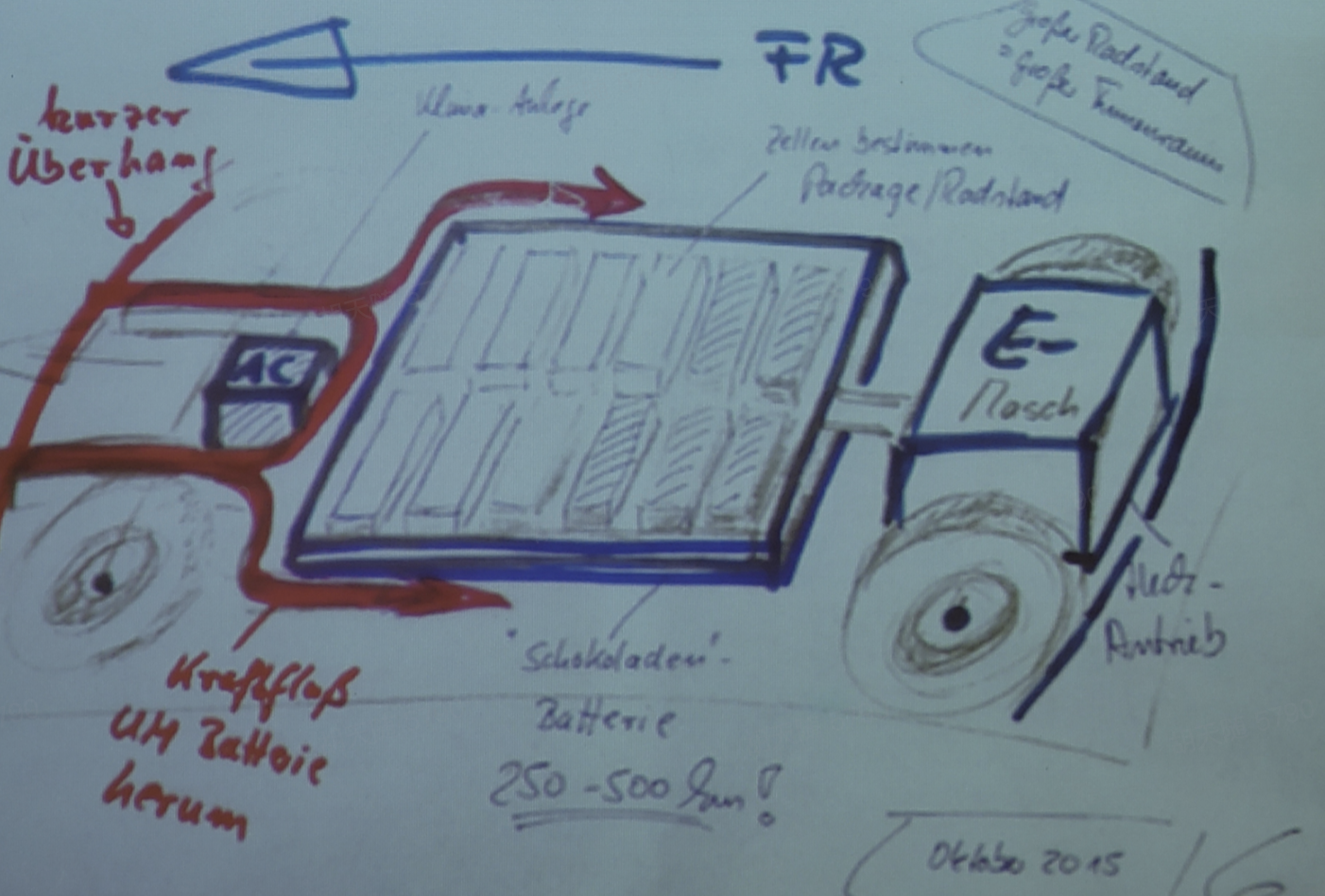
This is the first sketch of MEB in 2015. As we can see, the engineers at Volkswagen at the time planned for a range of 250 km – 500 km.
From the current range of overseas ID.3 and domestic ID.4, Volkswagen has already completed the goal of “exceeding expectations“. ID.4 with rear-wheel drive is currently the only Volkswagen model with rear-wheel drive that consumers can buy in China.The speed of new MEB platform models launched in the past two years may exceed the expectations of many people: by 2022, Volkswagen Group’s four brands, Volkswagen, Audi, Seat, and Skoda, will collectively launch 22 MEB electric vehicle models. This includes the upcoming ID.6 and Audi Q4-etron.
In addition, Volkswagen has five MEB factories worldwide, including two in Germany, one in the United States, and one each in the north and south of China. The ID.4 CROZZ was born in Foshan factory of FAW-Volkswagen. The MEB factory was rebuilt from the former FAW-Audi factory. After completion, MEB models and FAW-Audi models will be produced on the same line.
Returning to the ID.4 CROZZ itself, as the first MEB electric platform model launched by Volkswagen in the Chinese market, it is heavily relied upon. However, from the current market response, the call for ID.4 is not enthusiastic, and the most criticized aspect online is the drum brakes.
Including myself, I think most consumers are not fond of drum brakes. When the Volkswagen product team and I discussed this, they said, “When we learned that the MEB platform was using drum brakes, we immediately conveyed our clear opposition to the German headquarters.”
He went on to say, “Afterwards, China and Germany raised this issue several times, and the response we received was that MEB is a vehicle platform, and it is almost impossible to change the rear brake system after it has been developed. We have no choice but to accept it.”
“All MEB platform models in markets worldwide, from low to high, use drum brakes, including some future Audi MEB models.” Finally, he said with a helpless expression, “Now you know how desperate we are, right?”I understand his situation. In the current situation of fierce competition in the domestic automobile market regarding configuration, equipping a vehicle starting at 200,000 RMB with drum brakes can be very discouraging to consumers at the first impression.
Regarding why MEB adopts drum brakes, I have also looked at some materials. Volkswagen’s explanation is this: under the MEB platform, the electric motor on the rear axle can recycle kinetic energy, and the load on the rear axle during braking is relatively less than that of the front axle. Therefore, using drum brakes on the rear axle can already meet the performance requirements from the perspective of performance needs.
In addition, there is an interference fit between the brake pad and the brake disc of the disc brake, which always bites tightly. That is, there is a certain drag torque in the rotation of the wheel even without stepping on the brakes. In comparison, drum brakes have no drag torque, and using drum brakes can bring a slight increase in range while meeting the braking performance requirements. The theoretical calculation of the ID.4 prototype design showed that using drum brakes on the rear axle can achieve an approximately 20 km longer range than using disc brakes.
Honestly, I think this difference is not that big, but it’s still better to have more. As for claims about low maintenance costs, I’m too lazy to look at them. After all, if you buy an electric car for 200,000 RMB, the maintenance cost of a disc brake is not a big deal. However, the most critical issue is the braking performance of drum brakes.
In order to verify the braking performance, during the test drive of the ID.4, I specifically tested the braking effect of 100-0 hard braking several times, and the result was about 38 meters, which is considered normal for a vehicle of this level.
Although I dislike drum brakes, after actual test drives and testing, from the driver’s experience perspective, I really didn’t feel any shortcomings in the brake performance or braking pedal feel of the ID.4’s drum brakes.
Even so, I can only “accept” the drum brake setting. Whether it’s spoken or visually, even if I can choose to spend more money, I would still prefer disc brakes.
By the way, I also asked a question to Volkswagen personnel: why do they refer to the drum brakes used in the PPT as “advanced drum brakes”?
He explained that the term “advanced drum brakes” refers to the drum brakes used in MEB which are more advanced than traditional drum brakes, not that drum brakes as a whole are advanced. Moreover, the drum brakes developed for MEB are indeed relatively large in size, and they are the first drum brakes in the world to be equipped with electronic parking brakes. It is reasonable to say that they are advanced drum brakes, but the Chinese language is vast and profound, and he didn’t realize that this could cause misunderstandings.
Regarding the discussion on drum brakes, this is the end of the discussion. In summary, there is no problem with the braking performance. Whether or not to accept the drum brake setting is a matter of individual preference. However, if you give up on this vehicle just because of the reputation of its drum brakes, you may miss out on a good car.
Volkswagen has actually put a lot of thought into this car.A few days ago, in our ID.4 CROZZ test drive video, I gave a high evaluation of this car: a rare budget-friendly pure electric car without the pretentiousness of Tesla.
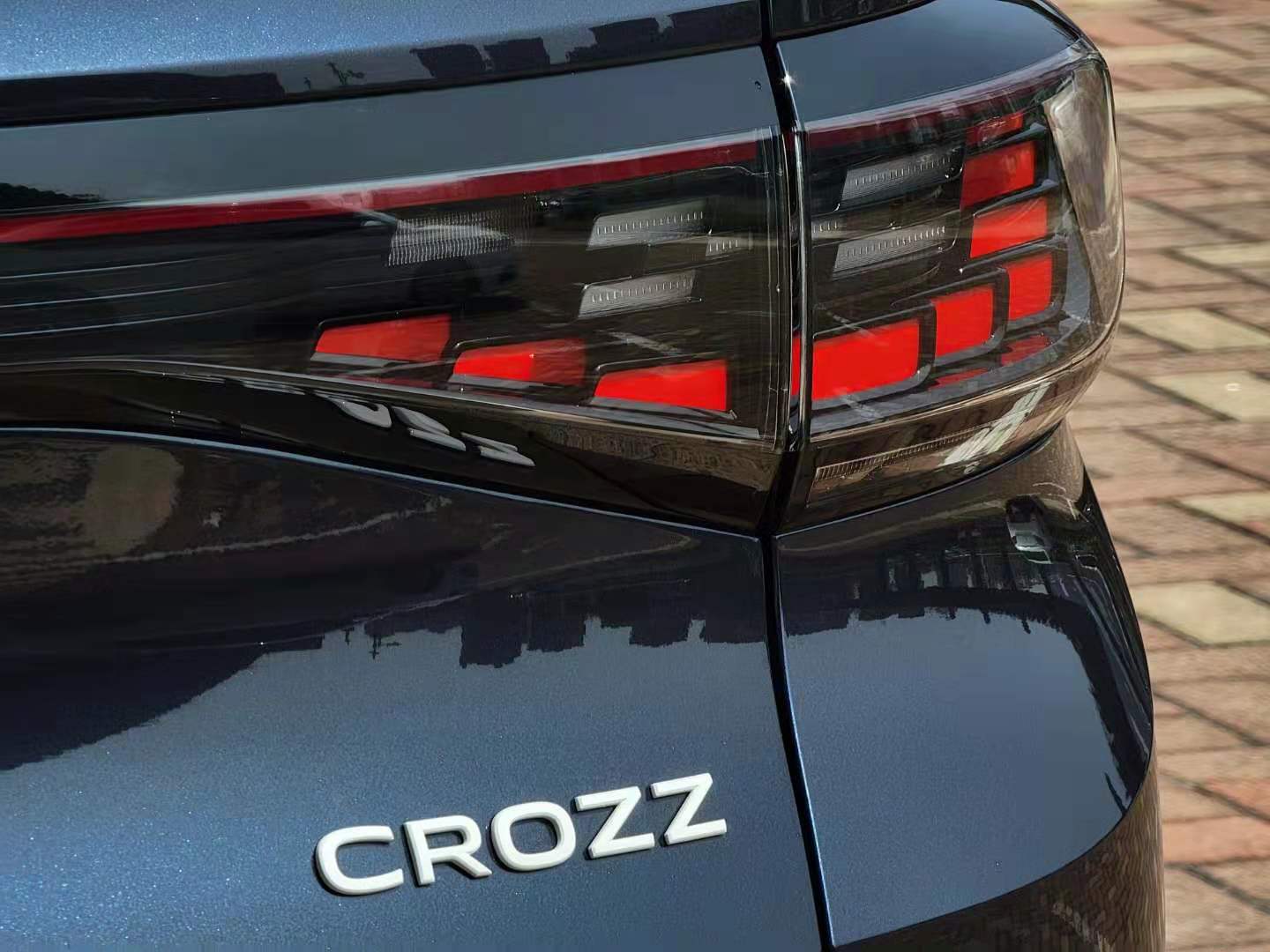
However, the content that could be conveyed in the video was limited. We can explain why we gave this evaluation in detail in the article.
Kinetic Energy Recovery
The non-adjustable strong kinetic energy recovery setting on the updated Model 3/Y has caused much controversy since its delivery in China. For someone like me who usually drives the Model 3 in the “Standard” gear with kinetic energy recovery, this setting doesn’t actually have much of an impact. After the adaptation period, most Tesla owners prefer this setting.
However, it should be pointed out that not everyone can adapt to this setting. Moreover, during the period before adaptation, the strong kinetic energy recovery setting will significantly affect the driving and riding experience of users. Tesla’s problem now is that there is no choice for this setting, and everyone is forced to learn a new method of controlling the accelerator.
The kinetic energy recovery setting of the ID.4 CROZZ is more user-friendly. The shifter of the ID.4 CROZZ contains two gears for kinetic energy recovery—the D and B gears.
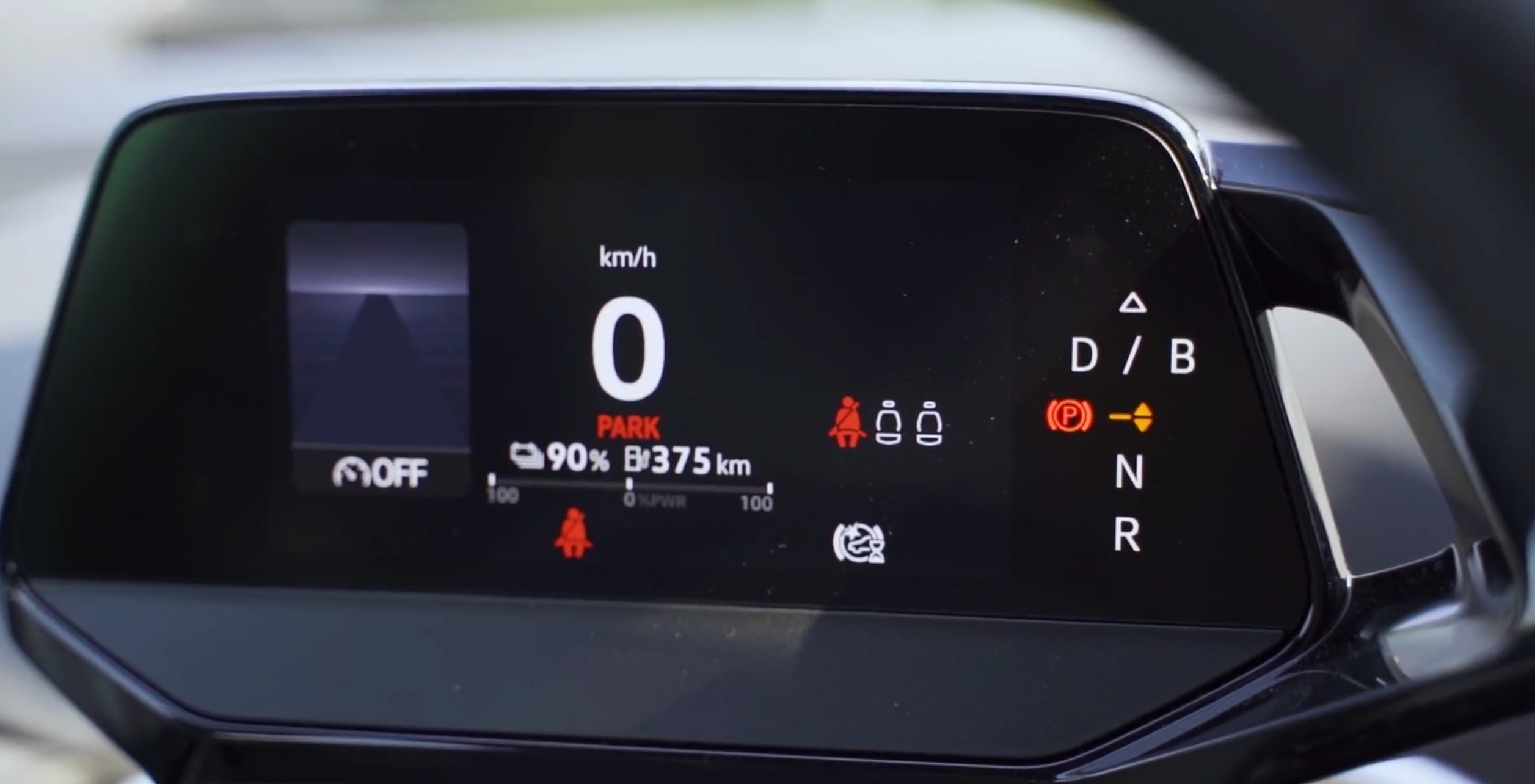
When the vehicle is in “Comfort” or “Eco” mode in the D gear, the kinetic energy recovery is nearly 0 (about -0.02 G), and releasing the accelerator gives the vehicle the experience of coasting in neutral gear like a gasoline vehicle. In “Sport” mode, there is slightly stronger kinetic energy recovery (about -0.1 G).
In the B gear, regardless of the mode, there is strong kinetic energy recovery, and the maximum deceleration force when releasing the accelerator is about -0.125 G. When completely releasing the accelerator, the kinetic energy recovery from the point of intervention to reaching the maximum level of about -0.125 G is a very linear and gradual process. For the ID.4 CROZZ, which is positioned for family use, this can be described as comfortable and appropriate.
Some people may say that the deceleration force when releasing the accelerator is somewhat weak. In daily driving, if the deceleration when releasing the accelerator is not strong enough and the brake needs to be applied, isn’t the energy wasted in the braking process?
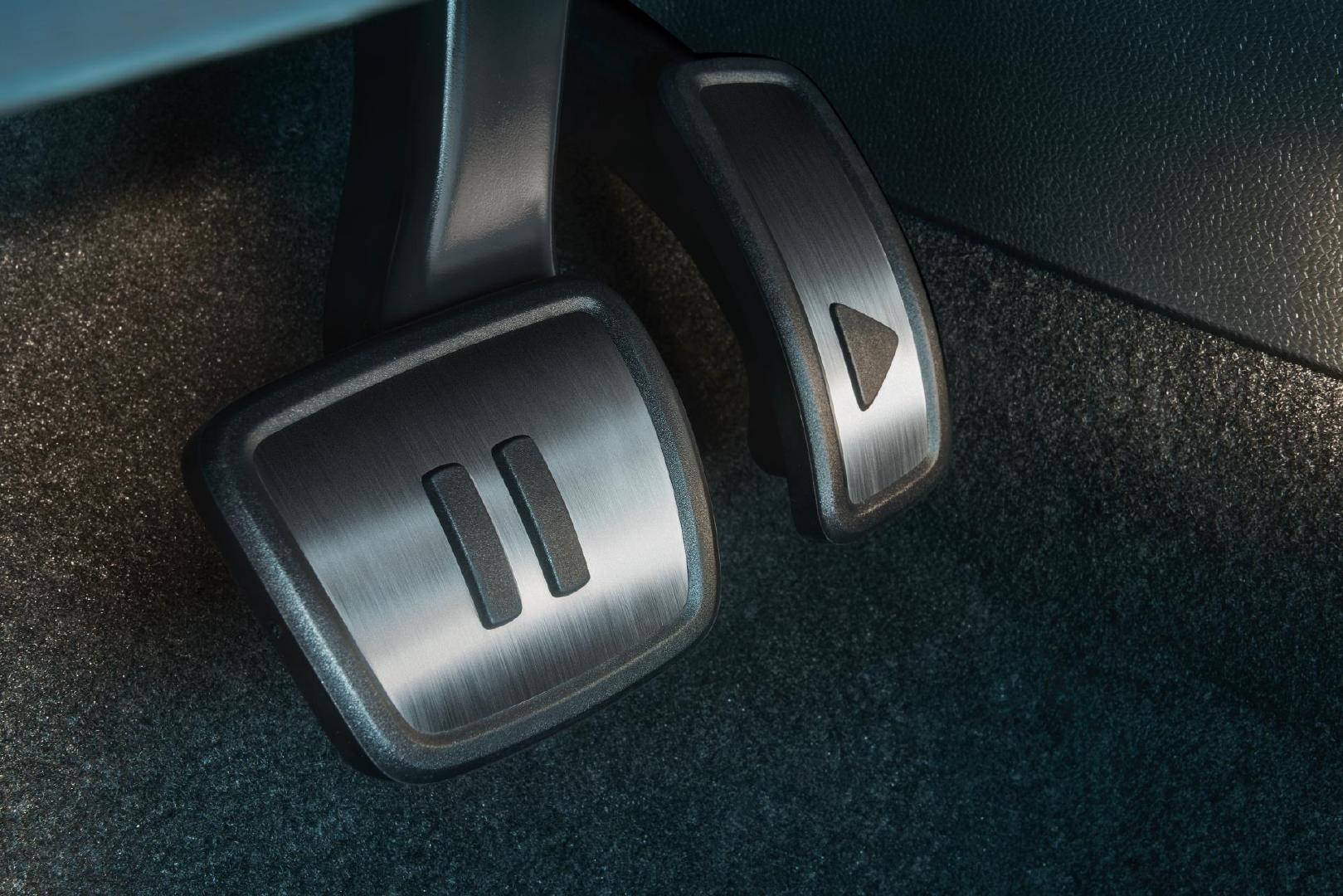 Volkswagen has already considered this issue for ID.4, and the smart part of it is that, before the braking force is not greater than -0.3 G, the braking still relies on kinetic energy recovery when lightly stepping on the brake, and only when the braking force is greater than -0.3 G does the mechanical brake intervene. However, in our daily driving, many brake applications are less than -0.3 G.
Volkswagen has already considered this issue for ID.4, and the smart part of it is that, before the braking force is not greater than -0.3 G, the braking still relies on kinetic energy recovery when lightly stepping on the brake, and only when the braking force is greater than -0.3 G does the mechanical brake intervene. However, in our daily driving, many brake applications are less than -0.3 G.
Moreover, currently most brands on the market require entering the vehicle settings to adjust the gear for energy recovery, while on ID.4, the B and D gears are directly set by cycling the gear lever forward without moving, which is both convenient and does not distract.
If you read this paragraph carefully, Volkswagen’s thinking on the logic of pure electric vehicle products is already evident.
Buttons and Switches: Touch Control with Vibration Feedback & Appropriately Reserved Mechanical Switches
ID.4 CROZZ has a large number of physical touch buttons on the center console, steering wheel, and door handles. Compared with the touch screen plus virtual touch buttons, Volkswagen retains physical buttons that are more convenient for blind operation.
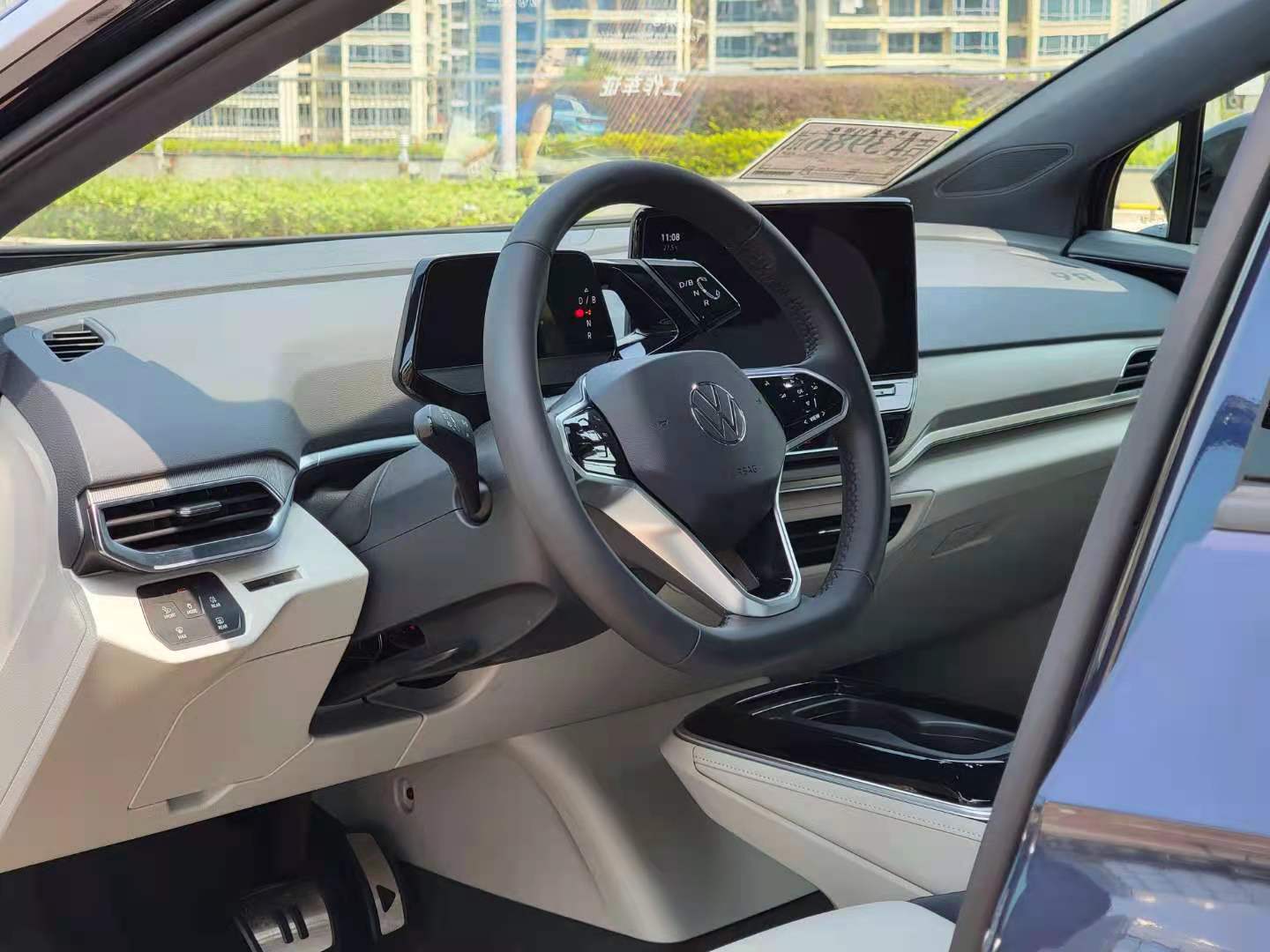
Volkswagen also adds “vibration + audible feedback” to the physical touch buttons. While adjusting the volume by sliding the touch button on the center console, there will be a vibration accompanied by an audible prompt every time the volume is changed. The sliding touch controls of features such as the sunshade and temperature adjustment also have vibration feedback.
The ACC speed control button on the left side of the steering wheel can not only be adjusted by sliding touch up and down but also by pressing with light-heavily two-stage vibration feedback. A light press is 5, and a heavy press is 10.
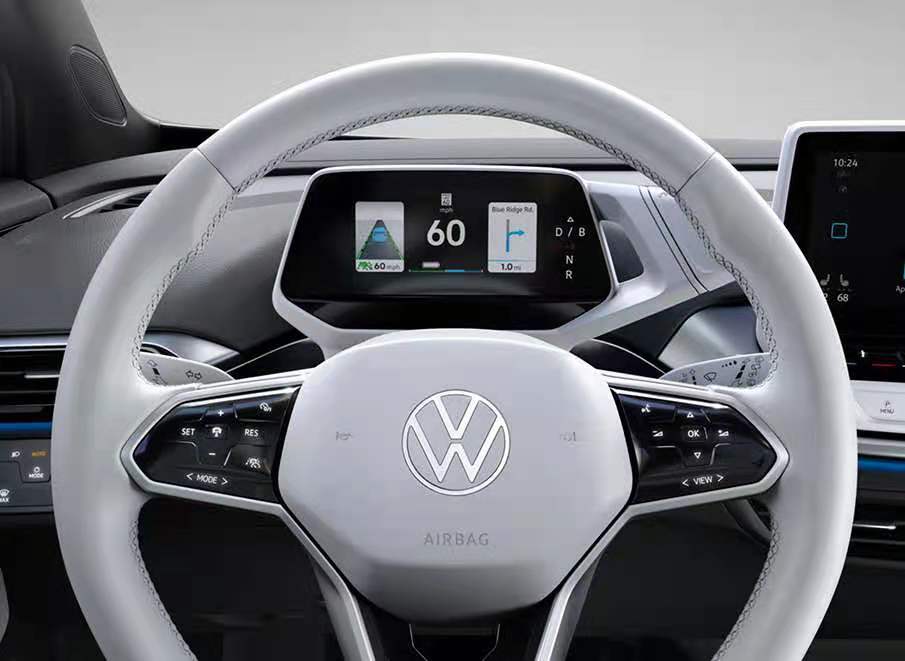
In addition to these touch controls with feedback, Volkswagen also retains some commonly used physical buttons. These include electric tailgate, wipers, rearview mirror adjustment, child lock, front and rear fog lights, front and rear defoggers, and the one I personally like very much – the switch for automatic interior lighting function located next to the sunshade switch.
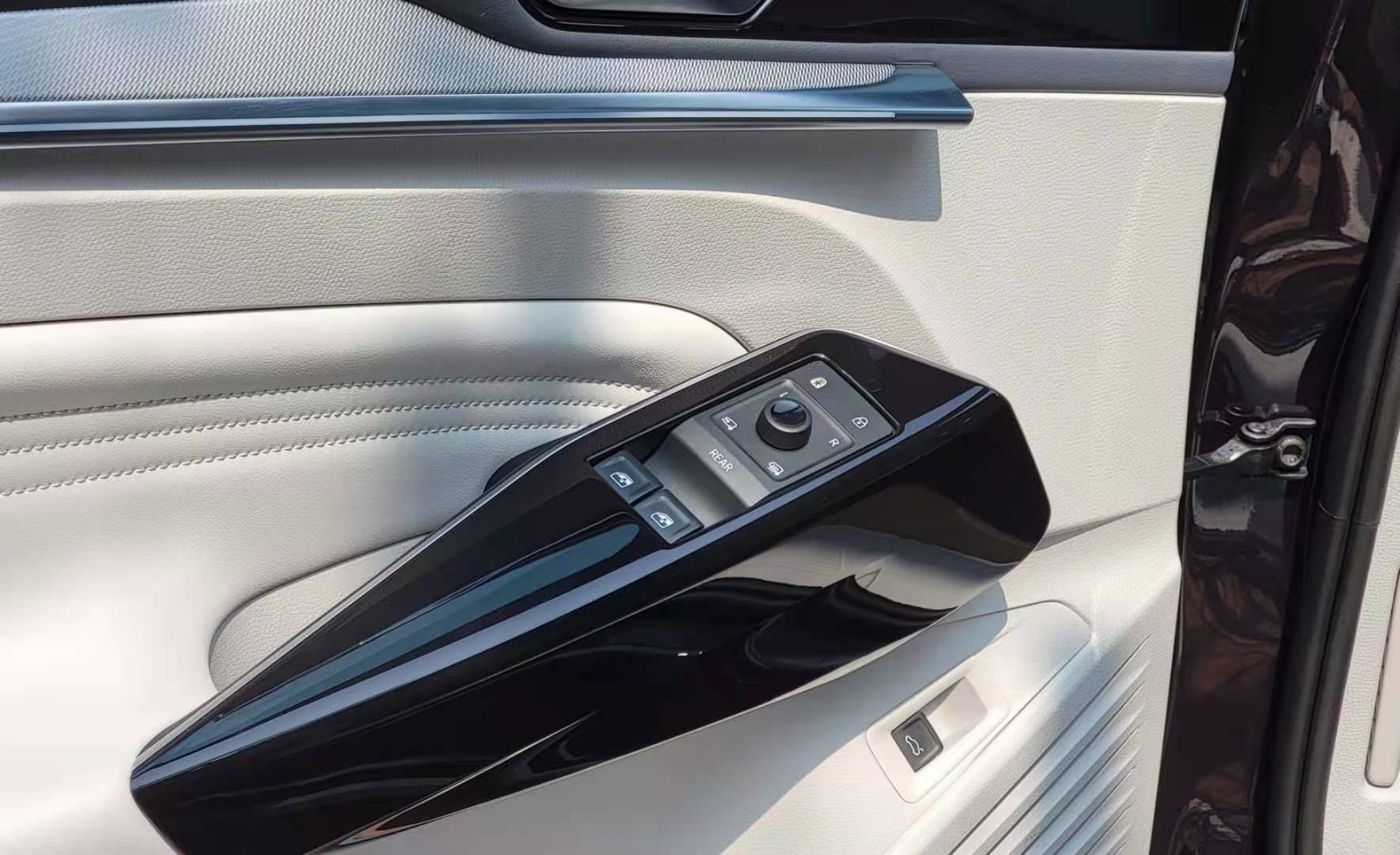
As someone who usually dislikes the automatic interior lights turning on when shifting to P gear at night, on many other cars I have to enter several layers of menus in the vehicle settings page to turn off this feature, but on ID.4, I just need to lift my hand and press this switch.Translated Markdown text:
Also, the door handles of ID.4 do not adopt the popular hidden design, instead, there is a hollow underneath the door handle, flush with the door. There is an electronic switch inside, operated just like an electronic tailgate button, which activates when you pull the door handle, and the opening process goes smoothly.
Considering various special cases, the front door handle of ID.4 is also equipped with a mechanical pull handle. If the electronic switch fails, just pull up the handle forcefully and trigger the mechanical switch.
Overall, ID.4 has neither a densely packed solid button layout like traditional fuel cars, nor does it have a “screen that controls everything” like Tesla. After experiencing ID.4 for two days, I think Volkswagen has found a good balance point between the two – there is a bit of electronic style but the basic operation practicality has not been abandoned.
No front trunk, but the front space is not wasted
Although based on the MEB pure electric platform, ID.4 does not have the “common” front trunk of pure electric platform models, which was a little disappointing at first. After communicating with Volkswagen’s product department, I have a better understanding of why there is no front trunk.
ID.4 has a wheelbase of 2765 mm but the overall length of the car is only 4592 mm. The passenger cabin accounts for a relatively large proportion of the length of the whole vehicle. From the side picture of ID.4, you can clearly see that the front cabin of ID.4 is actually short. Even with the short front cabin, the suspension of ID.4 based on the pure electric platform is already very short. The front wheel arch extends to the position of the rearview mirror.
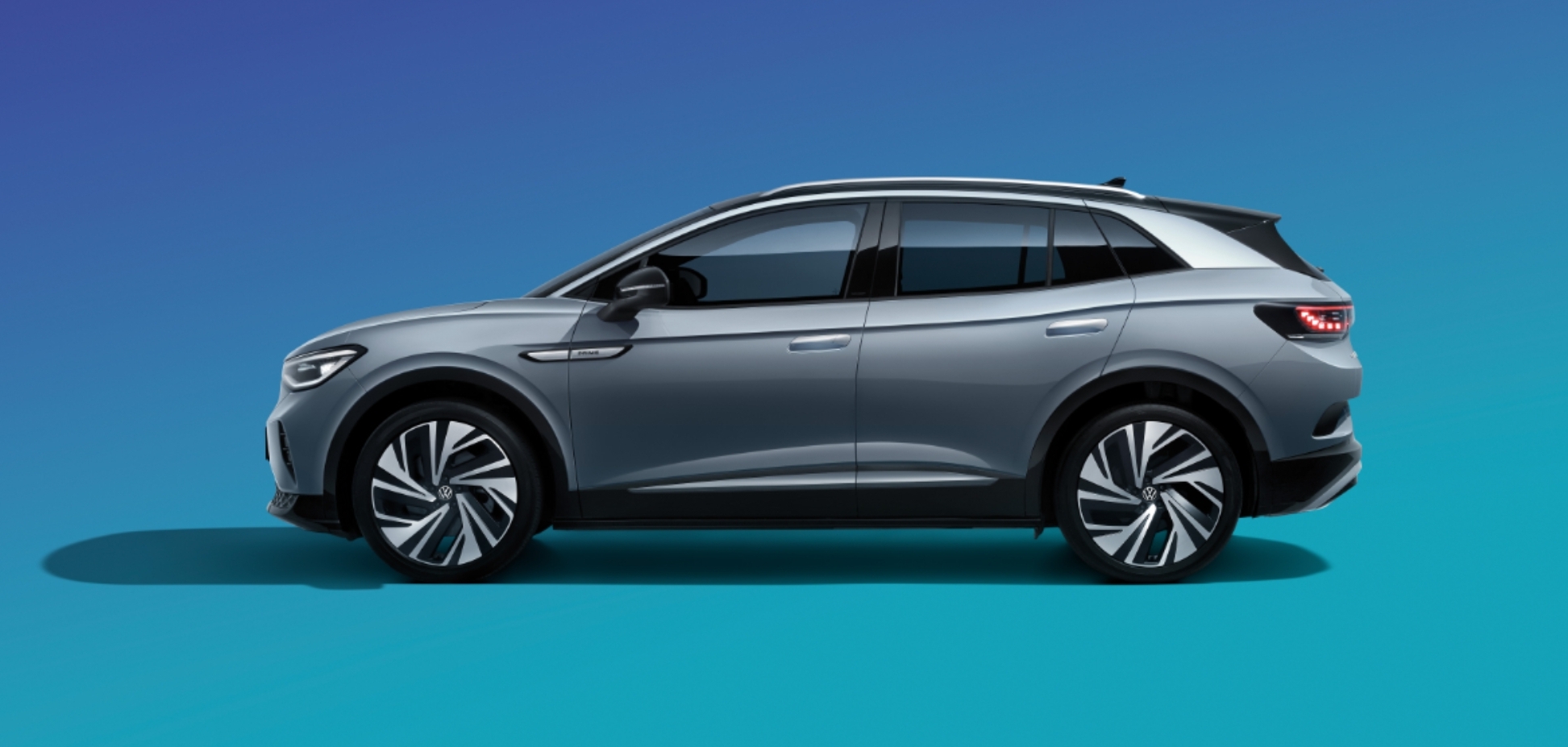
When I first saw this appearance and proportion, I was worried that the front cabin of ID.4 would intrude and affect the legroom. But after sitting in the front row of ID.4, I found that there is enough legroom under my 180cm frame, and the position of the right foot of the passenger was not invaded by the wheel arch, which is very smooth.
I mention the wheel arch because the front wheel of ID.4 is a large wheel of 235/50 R20, and it even has a large turning angle (inside 48.19° / outside 39.93 °) with a turning radius of only 4.85 meters, which can make a U-turn on a slightly wider road.
To achieve such a large turning angle, the distance between the front wheel and the wheel arch of ID.4 is very far, which means the wheel arch intrudes inward significantly. However, as I said, the legroom of the front row in the cockpit is not affected. Therefore, the small front cabin size is naturally affected in terms of space.Then comes the AR HUD, the one provided by LG for ID.4 has good visual effects, but its size reaches 428 * 327 * 269 (mm). And because the AR HUD needs to consider the viewing angle and projection distance, there are many requirements for the installation position, thus squeezing the space in the front compartment.
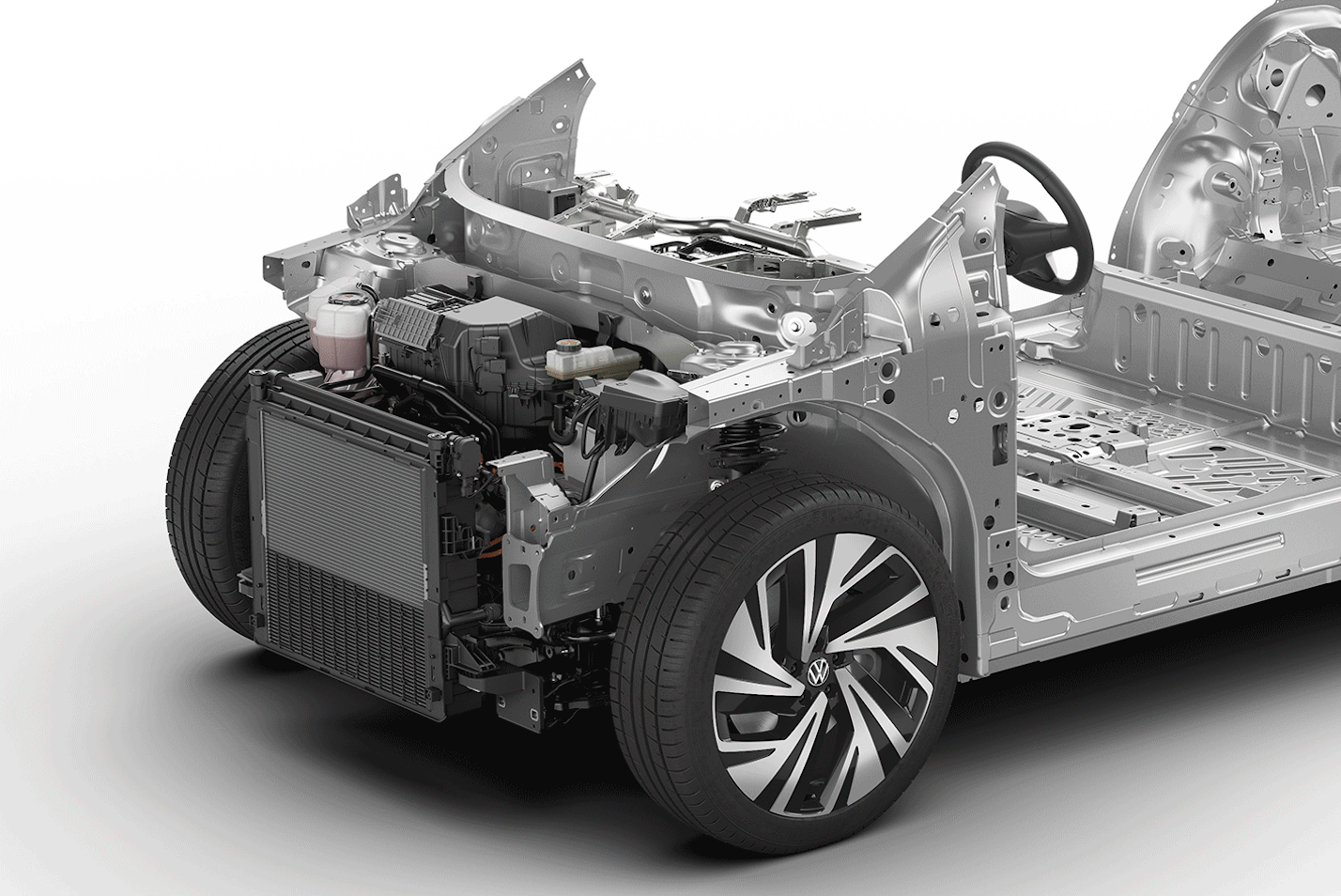
In such a short front end, ID.4 gave up the front trunk in exchange for a large turning angle and the only AR HUD in its class, while retaining the spacious front row space without any compromise.
This is what differentiation should look like.
There are many parts of ID.4’s product that can showcase differentiation, which is quite remarkable for Volkswagen, a company with the “traditional car manufacturer” label. Being able to apply these new ideas to its first pure electric platform model is actually breaking through itself.
In my opinion, the most valuable thing is that these different things are not for show, and they are not just being different for the sake of being different. Compared with other manufacturers, especially Tesla, Volkswagen’s differentiation is based on its own product positioning, characteristics, value and targeted considerations.
This is why I think the ID.4 is “a rare affordable electric car without trying to be like Tesla.”
During today’s ID.4 CROZZ launch event, the atmosphere was very joyful, and there was a strong sense of variety shows throughout the event. The delivery segment, where the car owners went on stage, was also full of ceremony, giving the owners a lot of exposure, adding a touch of new force.
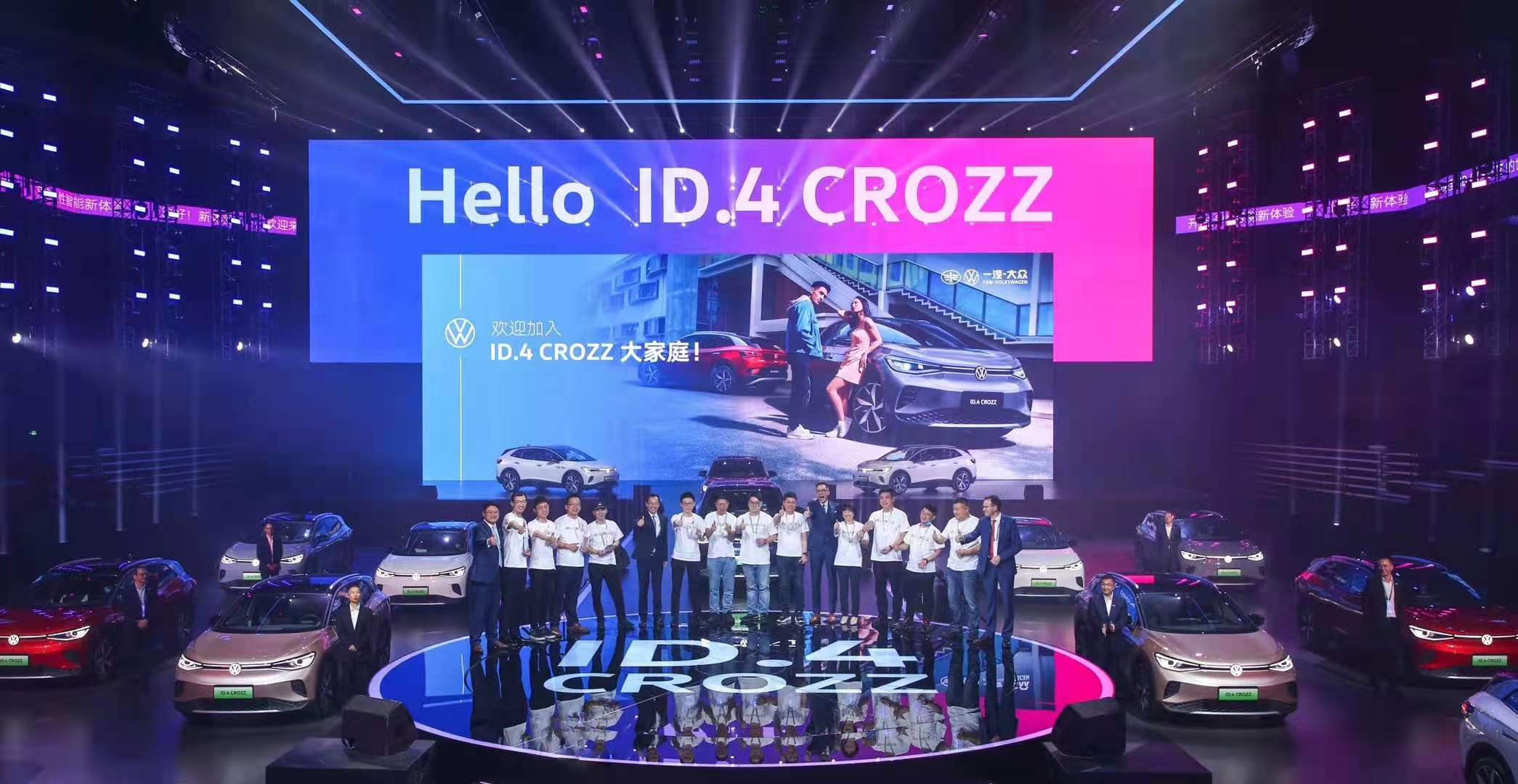
This scene is not what I imagine Volkswagen to be like, except for the anonymous mockery of a certain competitor during the launch event.
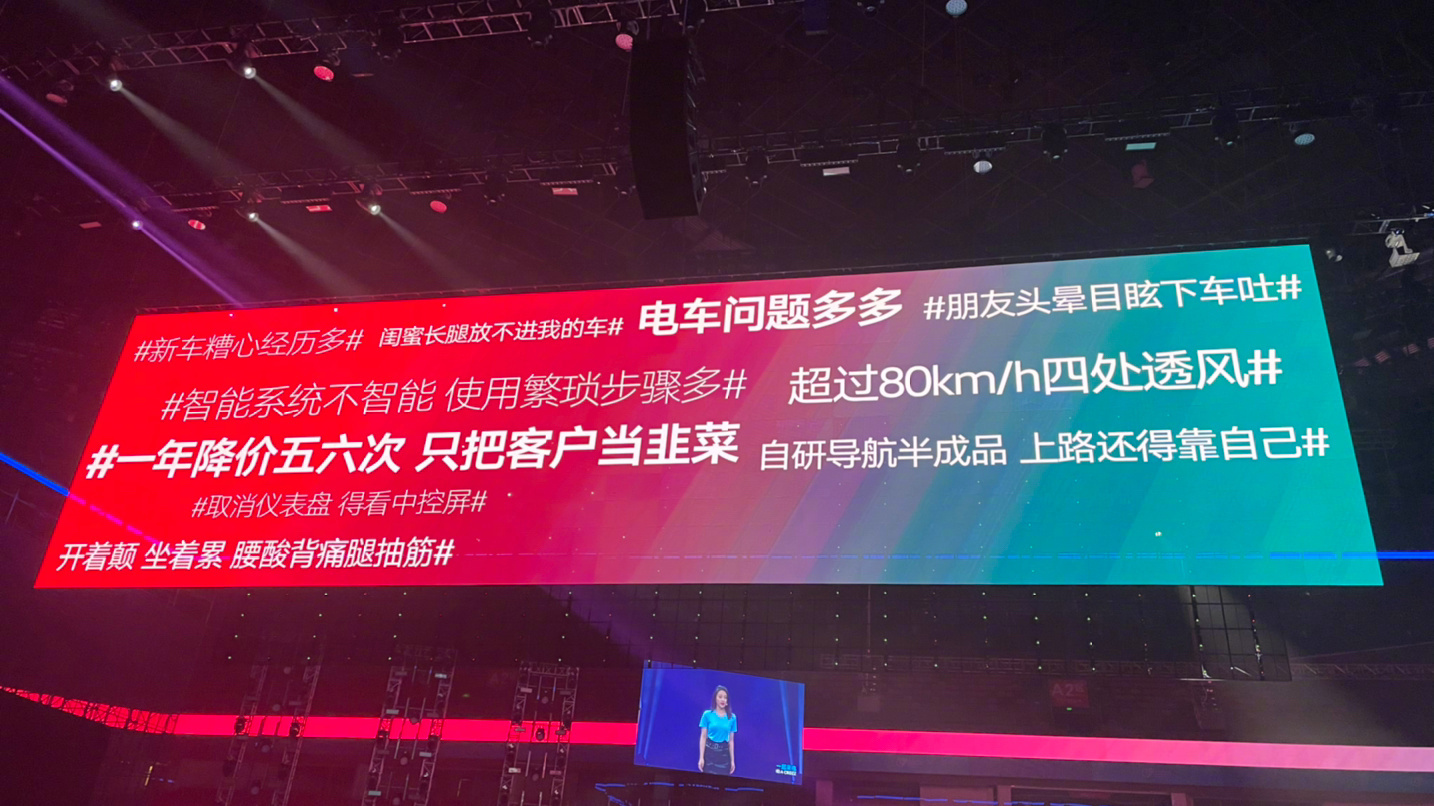
It is said that the era of electrification is a time of starting from scratch and reshuffling the market, and even century-old car companies have to make changes and step out of their comfort zones facing unstoppable global industry changes. The most difficult reform in the world is to reform oneself.
The cold reception of German-made EVs such as EQC, Etron and iX3 in the domestic market once again proves the difficulty of the transformation of electrification. The new rules of the game are not easy to adapt to.
So there are voices saying that “EVs made by traditional car makers are not good enough.”However, along the way, Volkswagen’s actions do set it apart from “traditional car companies,” from heavily investing in the MEB pure electric platform, to announcing the construction of a saturated coverage charging network, to transforming from an agent sales model to a direct sales model, as well as pricing the ID.4 lower than competing gasoline products. Combined with the content of “Volkswagen Power Day” on March 15th, you’ll find that this automaker has already set their sights further ahead.
Returning to the present, in this electric car market where there is Tesla ahead and new challengers behind, Volkswagen’s future will not be an easy one – especially considering consumers’ prejudiced view towards traditional brand electric cars. However, no matter how difficult, a new journey has already begun with the launch and delivery of the ID.4.
This article is a translation by ChatGPT of a Chinese report from 42HOW. If you have any questions about it, please email bd@42how.com.
